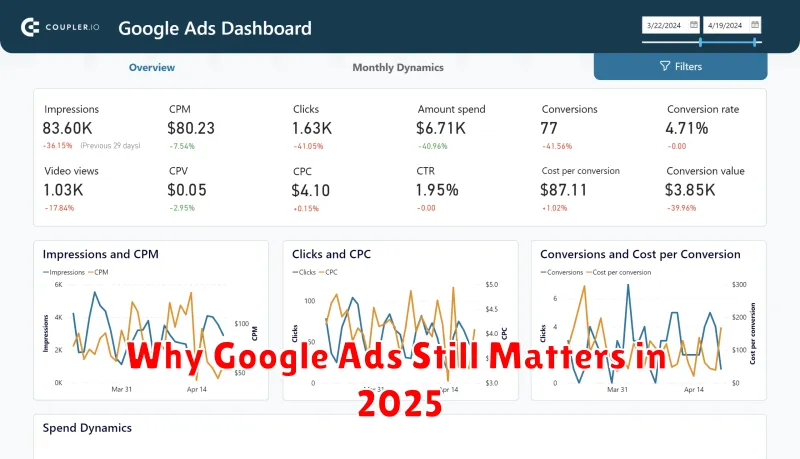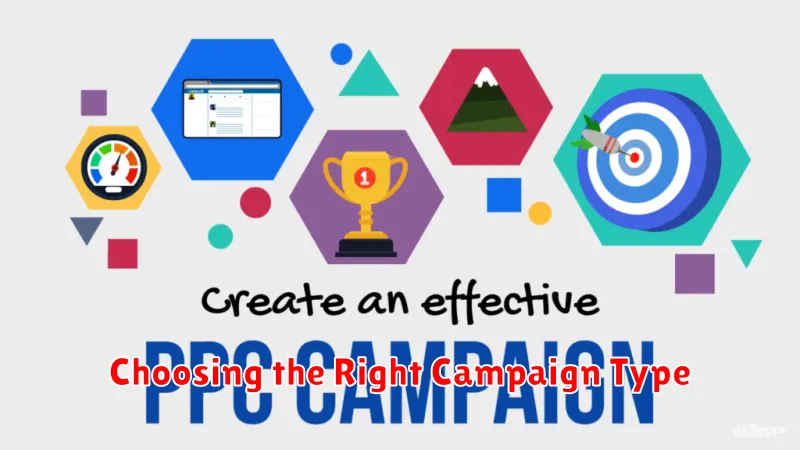Are you looking to drive targeted traffic to your website and boost your return on investment (ROI)? A profitable Pay-Per-Click (PPC) campaign on Google Ads can be the key to unlocking significant growth for your business. This comprehensive guide will equip you with the essential knowledge and practical strategies to create, manage, and optimize a successful Google Ads PPC campaign that delivers measurable results. Learn how to effectively target your ideal audience, craft compelling ad copy, and master bidding strategies to maximize your conversions while minimizing your ad spend.
From keyword research and campaign setup to conversion tracking and ongoing optimization, this article will cover all the crucial aspects of running a profitable PPC campaign. Whether you are a seasoned marketer or just starting with Google Ads, this guide will provide you with valuable insights and actionable steps to help you achieve your marketing goals. Discover the power of PPC advertising and unlock the potential to reach a wider audience, generate high-quality leads, and ultimately, increase your profits through a well-executed Google Ads campaign.
Introduction to Pay-Per-Click Advertising
Pay-per-click (PPC) advertising is a powerful digital marketing model where advertisers pay a fee each time one of their ads is clicked. Essentially, it’s a way of buying visits to your website, rather than attempting to “earn” those visits organically.
PPC advertising is commonly associated with search engine marketing (SEM), particularly on platforms like Google Ads. When a user searches for a keyword related to your business, your ad can appear at the top or bottom of the search results page. You only pay when someone clicks on your ad and visits your landing page.
Why Google Ads Still Matters in 2025

Even in 2025, Google Ads remains a critical component of a successful digital marketing strategy. Its reach is unparalleled, connecting businesses with potential customers actively searching for products and services.
Targeted advertising capabilities allow for pinpoint accuracy, ensuring your message reaches the right audience at the optimal time. This translates to a higher return on investment compared to broader, less focused marketing efforts.
The platform’s measurable results and flexible budget options provide businesses with granular control over their campaigns, allowing for adjustments and optimizations based on real-time data.
Choosing the Right Campaign Type

Selecting the correct Google Ads campaign type is crucial for maximizing your return on investment. Your choice depends on your specific marketing objectives.
Are you aiming for sales, website traffic, or brand awareness? For driving direct sales and conversions, consider Search campaigns. If your goal is broader reach and engagement, Display campaigns might be more effective. Video campaigns on YouTube are ideal for building brand awareness and reaching a wider audience.
Carefully consider your goals before launching your campaign to ensure optimal performance and profitability.
Keyword Research and Match Types
Keyword research is the foundation of a successful PPC campaign. Identifying the right keywords—the terms your potential customers use when searching—is crucial.
Match types control which searches trigger your ads. Broad match reaches the widest audience, while exact match offers the most control. Phrase match and modified broad match provide intermediate options, balancing reach and relevance. Choosing the right match type for each keyword helps optimize your spending and attract qualified leads.
Setting Realistic Budget and Bids
Budgeting is crucial for PPC success. Start with a manageable amount you’re comfortable spending while testing and optimizing your campaigns. Don’t overspend initially.
Bidding requires careful consideration. Keywords related to your business have varying costs. Research average cost-per-click (CPC) for your target keywords. Set bids that align with your budget and projected return on investment (ROI). Adjust bids based on performance data.
Crafting Click-Worthy Ad Copy
Writing effective ad copy is crucial for a successful PPC campaign. Your ad copy is the first, and often only, interaction a potential customer has with your business on the search results page. Compelling copy should highlight your unique selling proposition and clearly communicate the value you offer.
Focus on using strong keywords that align with your target audience’s search queries. Keep your messaging concise and benefit-oriented, emphasizing what the customer gains by choosing your product or service. A clear call to action encourages immediate engagement.
Creating Optimized Landing Pages
A high-performing landing page is crucial for PPC success. It’s where users “land” after clicking your ad, and its design directly impacts conversion rates. Ensure your landing page message matches your ad copy to provide a seamless user experience.
Focus on a clear call to action. What do you want visitors to do? Make it obvious and easy for them to complete the desired action, whether it’s making a purchase, filling out a form, or signing up for a newsletter.
Page speed is another critical factor. A slow-loading page can lead to high bounce rates and lost conversions. Optimize images, minimize HTTP requests, and leverage browser caching to improve loading times.
Using Conversion Tracking Effectively
Conversion tracking is crucial for a profitable PPC campaign. It allows you to measure the effectiveness of your keywords, ads, and landing pages.
By properly setting up conversion tracking, you can identify which elements of your campaign are driving valuable actions, such as purchases or sign-ups. This data allows for data-driven optimization, enabling you to allocate budget efficiently and improve your return on investment (ROI).
Analyze your conversion data to identify high-performing keywords and ads. Refine your targeting and bidding strategies based on this information to maximize conversions and minimize wasted ad spend.
Avoiding Common PPC Mistakes
Creating a profitable PPC campaign requires diligence and attention to detail. Avoid these common mistakes to maximize your return on investment.
Poor Keyword Research: Targeting the wrong keywords wastes budget. Focus on relevant, high-intent keywords.
Ignoring Negative Keywords: Failing to exclude irrelevant search terms leads to wasted clicks and spend. Regularly review and update your negative keyword list.
Neglecting Landing Page Optimization: A poorly designed landing page can deter conversions. Ensure your landing page is relevant to your ad copy and optimized for conversions.
Improving ROI Over Time
Continuously optimizing your Google Ads campaign is crucial for long-term success. Regularly analyze your campaign performance using key metrics like conversion rate, click-through rate (CTR), and cost-per-conversion.
Identify high-performing keywords and allocate more budget to them. Conversely, pause or refine underperforming keywords to minimize wasted spend. A/B test ad copy variations to determine which resonates best with your target audience and drives conversions. Refine your targeting options over time to reach the most qualified potential customers.

